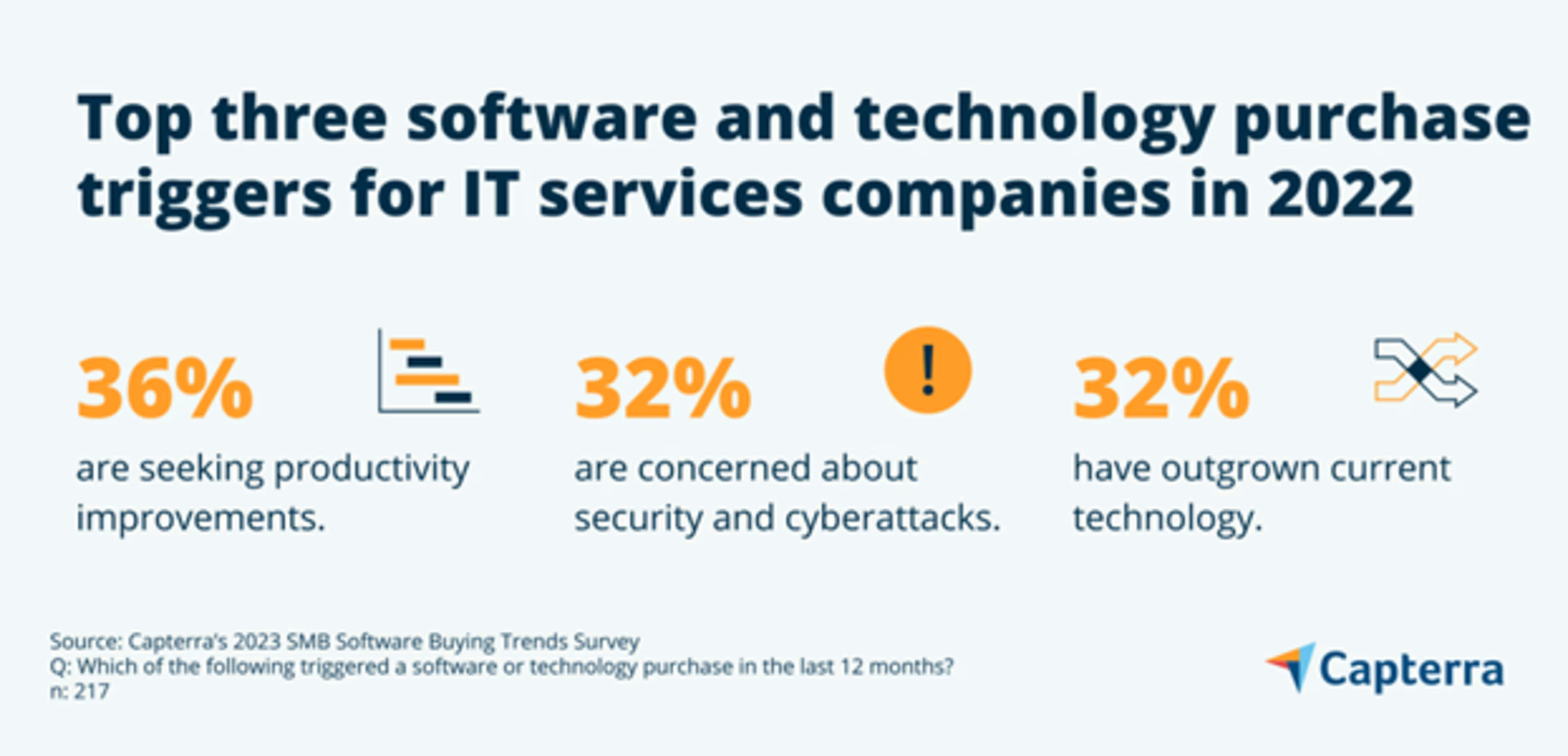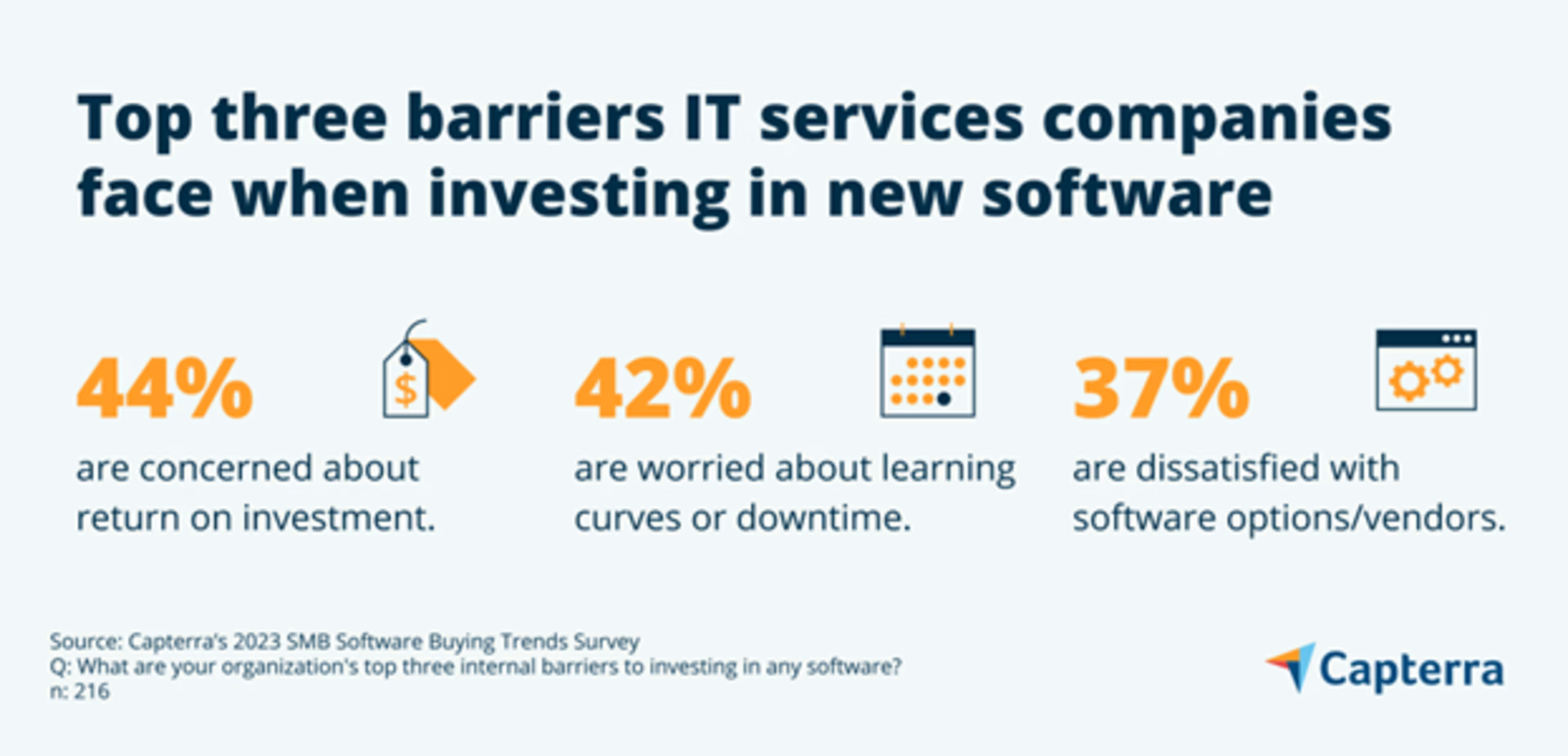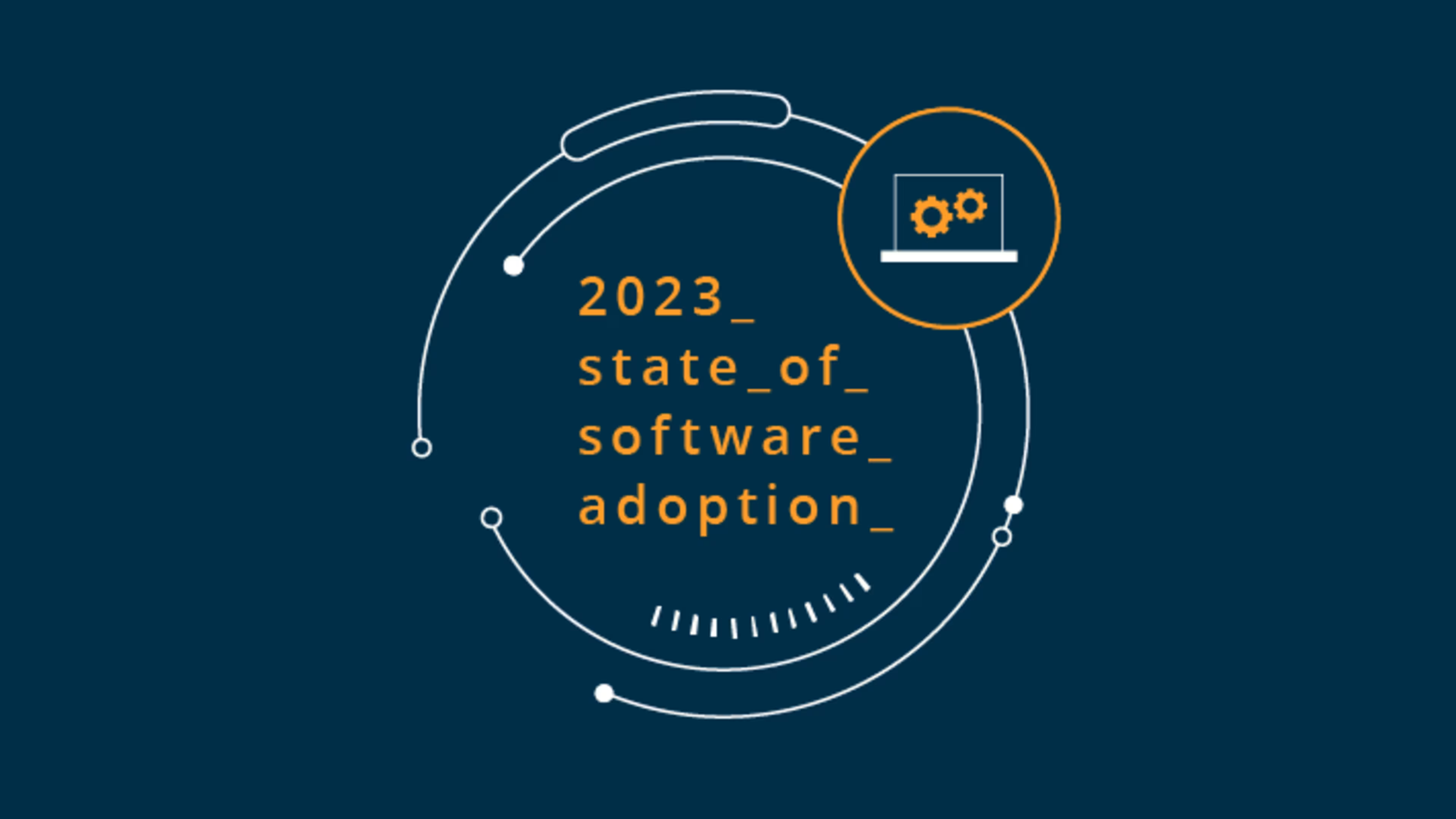Our data shows that productivity, security, and outdated technology prompt new purchases—but companies worry about ROI, downtime, and the options available.
To service clients efficiently and maintain competitiveness in a crowded field, IT services companies must constantly strive for greater productivity—a goal often achieved by purchasing new software. But the purchase process isn’t exactly straightforward. Capterra’s 2023 SMB Software Buying Trends Survey [*] finds that IT services companies take an average of five months to evaluate, select, and finalize the purchase of new software or technology.
One issue extending the process is, concerns about security, which our survey finds is the industry’s single most important factor when searching for new software. For IT companies, security is paramount not only for the business itself but also to ensure the protection of client data and systems, particularly in the wake of sharp increases in attacks on managed service providers over the last couple of years (e.g., Kaseya, SolarWinds).
In this article, we’ll explore the factors that prompt the purchase of new software, examine the barriers that complicate the process, and point you to solutions that will make it easier to find the best system for your IT company.
Productivity improvements, security concerns, and outdated technology top purchase triggers for IT services companies
Our survey finds that the most common software purchase triggers are around productivity, security, and aging technology, due in large part to increasingly distributed workforces, rising risks of cyberattacks, and a rapidly evolving technology landscape. As your company grows and technology evolves, choosing the right software that can scale with your business without breaking the bank is critical–and the stakes are even higher when you’re in IT services.

Capterra’s 2023 SMB Tech Trends Annual State of Software Adoption Reports capture global trends across industries and reveal how small- and midsize-business leaders are adopting technologies to embrace change, optimize efficiency, and accelerate growth. Our reports are designed to support decision-makers with the insights they need to embrace the right technology and services.
View our 2023 U.S. SMB Software Buying Trends Report to understand why security and implementation should be top-of-mind as you evaluate new technology
View our 2023 State of Marketing Software Adoption Report to discover how marketers are leveraging emerging technology
View our 2023 State of Accounting & Finance Software Adoption Report to see why financial firms are spending more on software
View our 2023 State of IT Software Adoption Report to understand how security concerns are shaping IT technology strategies
View our 2023 State of Manufacturing Software Adoption Report to discover how companies are finding technology without regret
Thirty-six percent of companies need productivity improvements
If there’s one thing software and technology does best, it’s improving productivity. For your business, this can include software, such as project management tools, that helps you manage tasks and activities across various functions. Productivity software also includes solutions that facilitate communication and improve collaboration among employees.
If your business is looking for software to simplify or optimize business processes to improve productivity, check out our Productivity Software Shortlist featuring the most popular and highly-rated solutions available.
Thirty-two percent have concerns about security and cyberattacks
Worries about cyberattacks are compelling nearly a third of companies to invest in new security software and technology. As cyber threats such as ransomware continue to evolve and intensify, businesses must find ways to lessen their impacts or prevent them in the first place.
If your business is concerned about cybersecurity, check out our network security software catalog, and read our recent security reports:
Thirty-two percent have outgrown their current technology
With every type of software or technology, there comes a time when it’s either outdated or simply not getting the job done, which is the case for 32% of our respondents. Maybe your business is growing quickly and needs more scalable software to keep pace. It could be that a game-changing new technology has matured to a point that you’re confident it will help your company be more competitive. In some circumstances, you might be using end-of-life technology that’s no longer being updated or supported by the manufacturer.
All of these situations require the evaluation and adoption of new technology. If you need help getting the process started, check out our guide: 5 Steps To Evaluate New Emerging Technology.
The top three barriers IT services companies face when investing in software are ROI, downtime, and available options
To overcome these purchase barriers, you must focus on the specific benefits the technology offers your company and how workflows will be altered when it is implemented. With this in mind, let’s take a look at the top three barriers IT companies face when investing in new technology.

Forty-four percent are concerned about return on investment (ROI)
Ensuring ROI is the top concern among IT services companies when it comes to buying new technology. To make sure you’re making a sound investment, it’s important to conduct due diligence before making a purchase. According to our survey, if you want to learn about different software options for specific business needs, the most influential sources of information are:
Industry analysts/experts (40%)
Product trials (30%)
Google/search (30%)
Product feature/comparison websites (such as Capterra) (29%)
Finding the software that addresses your business needs makes sure your company is more productive than ever, and it alleviates concerns about unnecessary features that waste your money.
Forty-two percent are worried about downtime or learning curves when implementing new technology
The implementation process for new software or technology is fraught with potential pitfalls that can be avoided with proper preparation and support. Some strategies to make this process more efficient include:
Take advantage of free product demonstrations, ask vendors lots of questions, and speak with vendor client references.
Ensure that you fully understand the vendor's service-level agreements and the level of support you will receive during and after implementation.
Document every team and employee who will be affected by the new software and determine an implementation timeframe based on when it will make the least business impact.
Designate superusers early in the process who will champion the new technology and help colleagues learn how to use it.
Thirty-seven percent are dissatisfied with potential software solutions or vendors
There have never been more options available to businesses for every type of software need—but that also means it’s never been more complicated to select the right solution from a software vendor you trust. In fact, our survey finds that IT companies consider four to five different software providers on average before a final purchase decision is reached.
To help you select the best solution for your business, we’ve created a comprehensive guide to a great software match.
